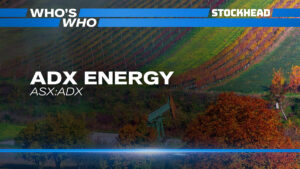These ASX stocks are cooking with gas, but reckon they’re much cheaper than their product implies

Picture: Getty Images
Oil and gas companies may be on the nose with some investors, yet with funding for new supply lagging even as demand remains persistent, prices for the commodity are sitting at historically high levels.
The war in Ukraine has disrupted oil and gas supply chains to Europe, and seen the world prioritise energy security as it faces an ongoing reliance on oil and gas.
Matters are not being helped by the shift to renewables, which is creating what could surely be one of history’s great arbitrages.
All of this adds up to a situation where gas is now seen as a critical resource, and not just a source of energy, which explains why demand has been steadily increasing for quite some time.
Industry forecasts
The International Energy Agency Oil 2023 medium-term market report forecasts that – based on current government policies and market trends – global oil demand will rise 6% between 2022 and 2028 to reach 105.7 million barrels per day (mb/d).
That increase in demand will be supported by robust demand from the petrochemical and aviation sectors.
Oil prices have hovered around (or above as it seems to be right now) the US$80/barrel mark since OPEC+ said in early July that it would limit supply into 2024, while Saudi Arabia pledged a production cut for July that has since been extended to include August.
Stockhead’s Bevis Yeo forecast oil prices would stay elevated and so far, he’s been pretty much on the money.
Supply of helium, which is typically produced as a by-product of natural gas, is also tight and facing its fourth major shortage since 2006 due to geopolitical forces, production faults, or planned maintenance shutdowns from major producers such as Russia, the US and Qatar.
Despite this imbalance between supply and demand, few sectors have companies as undervalued by conventional financial metrics as the energy space.
While battery minerals are the investment thematic taking all the focus at the junior end of the market, many gas, oil and even helium stocks are flying under the radar.
At the Market Insights Lunchtime Series at Noosa, presented by Resolve IR and Jane Morgan Management, we caught up with three players in the oil, gas, and helium space who investors may be sleeping on.
Queensland Pacific Metals (ASX:QPM)
Market cap: $183.37 million
Share price: $0.105
,
QPM’s main game is the Townsville Energy chemicals hub (TECH) project, a modern and sustainable refinery producing nickel and cobalt for the lithium-ion battery market, which has drawn the support of global OEMs and conglomerates LG, POSCO and General Motors.
But there’s another key pillar to the business – gas. QPM is acquiring 100% of assets from the Moranbah Gas Project and North Queensland Energy Joint Venture from the Arrow Energy Group and AGL Energy (ASX:AGL).
The deal will not only provide immediate revenue for QPM, but it will protect against the impact of energy price shocks at TECH.
“We need a lot of gas to run this nickel and cobalt plant,” QPM general manager of corporate development John Khoo said.
The producing asset is in the Bowen Basin, which contains the largest reserves of coking coal in Australia. QPM will pay just $5m for the assets but will receive $35m from Arrow and EGL to take on their gas supply obligations, meaning they’ve effectively been paid $30m to acquire the project.
“This is a producing asset doing about 10PJs per year and actually has reserves and resources close to 500 petajoules,” he said.
Khoo singled out Warrego Energy, a non-producing gas business with similar reserves and resources sold to Gina Rinehart’s Hancock Energy for $440 million, as a clear demonstration of the value of QPM’s own project.
“Post-acquisition, we will become the sixth largest domestic gas producer on the ASX and we have a pathway to grow,” he said.
“We’ve just released guidance on the project and within 12 months have a pathway to achieving annualised revenue of $200 million per year and annualised EBITDA of between $50 to $60 million per year.”
Noble Helium (ASX:NHE)
Market cap: $43.38 million
Share price: $0.26
,
It may be an afterthought for the general investor, but Noble Helium co-founder and CEO Justyn Wood says the gas is a critical raw material which should be in everyone’s portfolio.
“Helium is a critical gas which underpins a lot of the technologies in use today,” he said.
“It is a fast-growing sector and we are looking at double digit CAGR for the rest of this decade.”
After seven long years in the planning, NHE’s first campaign at its North Rukwa helium project in Tanzania is preparing to spud in Q3 2023.
The potential prize waiting to be unwrapped is significant. Noble said helium exploration bears similarities to oil and gas exploration with similar costs, but the value of the product is 50x greater.
Wood believes North Rukwa in the East African Rift is the best untested helium system on the planet.
“We are leveraging 20 years of exploration expertise to target it in exactly the right place,” he said.
“We’re not just throwing a dart but walking up and putting it pretty close to the bullseye and a lot of science and technology has gone into getting this right.”
Wood said Tanzania is one of the best places in Africa to do business and the company has around 30 years supply.
The North Rukwa basin targets a mean helium prospective resource of 16.5Bcf. While less than 10% of its independently certified mean of 176Bcf, it still equates to ~US$7.5 billion of in-ground value at today’s helium prices.
READ NOW: Helium is exploding onto the scene again. Here’s why Shortage 4.0 is different
ADX Energy (ASX:ADX)
Market cap: $25.3 million
Share price: $0.007
,
ADX is a European oil and gas explorer and producer, focused on Austria which is also branching out into the growing renewables game.
“We are currently producing around 340 barrels a day, which last year generated about $8 million in Aussie operating cashflow that we reinvested in the business,” executive chairman Ian Tchacos told attendees.
“We also have a very large exploration portfolio of around 213 million barrels of oil equivalent prospective resource.”
Tchacos said all its renewable projects, including a hydrogen project, solar park and geothermal play are part of its existing asset base.
For now, its oil portfolio is rapidly accelerating in productivity.
“How that’s all played out, we made a discovery in January last year and by October we had commercial production,” Tchacos said.
“We will drill two more wells in the next year and expect to increase production by somewhere between 600 to 1000 barrels a day so for us that will result in a 300% increase in production.”
ADX has some major competitive advantages. Its Austrian operations boast experienced staff, access to 3D data and infrastructure, while it is located at the epicentre of the European energy market which has seen its supplies severely disrupted by sanctions and the ensuing cat and mouse game between the EU and Russia.
Tchacos said most punters will concentrate on ADX’s large onshore gas project, which contains about 800Bcf and sits about 19km from an international gas pipeline.
“We are sitting in the middle of Europe, which is energy starved, in a jurisdiction where we can get things done quickly, have boots on the ground and have a very substantial work program going forward,” he said.
On Tchacos’ maths, ADX was running at an enterprise value (EV) per barrel of ~$2.60, ~7 cents per exploration barrel and $27,000 per flowing barrel, cheap by any measure.
“Our production underwrites our share price but you have a lot of exposure to short term growth through gas exploration and in the longer term three renewable projects,” he said.
At Stockhead, we tell it like it is. While ADX Energy is a Stockhead advertiser, it did not sponsor this article.

UNLOCK INSIGHTS
Discover the untold stories of emerging ASX stocks.
Daily news and expert analysis, it's free to subscribe.
By proceeding, you confirm you understand that we handle personal information in accordance with our Privacy Policy.








